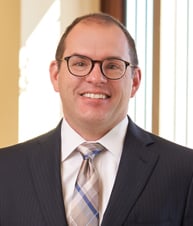A weekly summary of the precedential patent-related opinions issued by the Court of Appeals for the Federal Circuit and the opinions designated precedential or informative by the Patent Trial and Appeal Board.
TCL Communication Technology Holdings Ltd., et al. v. Telefonaktiebolaget LM Ericsson, et al., Nos. 2018-1363, -1732 (Fed. Cir. (C.D. Cal.) Dec. 5, 2019). Opinion by Chen, joined by Newman and Hughes.
Vacating and remanding a district court determination, the Federal Circuit ruled that the district court deprived Ericsson of its Seventh Amendment right to a jury trial by conducting a bench trial to determine a fair, reasonable, and non-discriminatory (FRAND) rate relating to a portfolio of standard-essential patents (SEPs).
Ericsson owns a portfolio of SEPs incorporated into 2G, 3G, and 4G mobile communications standards. For over a decade, Ericsson and TCL negotiated license terms for the SEPs. Before reaching an agreement, TCL filed a declaratory judgment action alleging that Ericsson had failed to offer a FRAND rate to TCL. Ericsson filed a separate suit against TCL seeking damages for infringement. The two actions were consolidated, and the district court conducted a ten-day bench trial to determine (1) a prospective FRAND rate for practicing each standard and (2) a “release payment” computed based on a closely related, retrospective FRAND rate for TCL’s past unlicensed sales.
On appeal, the Federal Circuit explained that the “threshold issue” was “whether Ericsson had a Seventh Amendment right to a jury trial on the adjudication of the ‘release payment’ term.” The inquiry turned on whether the relief sought by the release payment was legal or equitable in nature. The Federal Circuit determined that the underlying nature of the release payment term is legal, entitling Ericsson to a jury trial, and that Ericsson had not waived its right to a jury trial. The court ruled: “Because we conclude that the release payment is in substance compensatory relief for TCL’s past patent infringing activity, we hold that Ericsson was entitled to a jury trial on the calculation of the release payment amount, and that the district court deprived Ericsson of that right by determining that legal relief in a bench trial.”
Plastic Omnium Advanced Innovation & Research v. Donghee America, Inc., et al., No. 2018-2087 (Fed. Cir. (D. Del.) Dec. 3, 2019). Opinion by Reyna, joined by Newman. Dissenting opinion by Clevenger.
The Federal Circuit affirmed the district court’s grant of summary judgment of no literal infringement and no infringement under the doctrine of equivalents.
Plastic Omnium sued Donghee for infringement of several patents directed to blow molding techniques for manufacturing plastic fuel tanks. The asserted claims recite “cutting and opening an extruded parison of closed cross section.” The district court construed the term “parison” as “referring to a plastic tube with a closed cross section that is shaped by—and has reached the end of—a die and is split either immediately upon exiting the die or at some point thereafter.” In the accused product, the extruded plastic parison is cut in a separate “flat die” tool after it leaves the coextrusion die. Therefore, the district court awarded summary judgment of noninfringement to Donghee. Plastic Omnium appealed.
The Federal Circuit noted that “Donghee’s accused product is manufactured by a process where two separate plastic sheets are extruded from the die located at the lowest point of the extrusion head.” Therefore, the flat die does not produce an extruded parison but instead creates two separate plastic sheets. Plastic Omnium argued that the coextrusion head of Donghee’s process served as a coextrusion die, but the Federal Circuit noted that “extrusion head” and “die” are distinct terms in the asserted patents. Also, Donghee’s flat die is mounted directly on the extrusion head such that no tubular parison is extruded from the extrusion head. Consequently, the Federal Circuit affirmed the district court’s grant of summary judgment of noninfringement.
Judge Clevenger dissented, disagreeing with the majority’s analysis of the claimed extruded parison. In Judge Clevenger’s view, a material factual dispute existed over the functionality of the accused product’s die and extrusion head.
